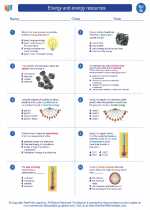Snow
Snow is a type of precipitation in the form of crystalline water ice, consisting of a multitude of snowflakes that fall from clouds. It is a common occurrence in cold climates and has a significant impact on the environment and human activities.
Formation of Snow
Snow forms when water vapor in the atmosphere condenses directly into ice crystals, bypassing the liquid stage. This process occurs in clouds at temperatures below freezing (0°C or 32°F).
Snowflakes
Snowflakes are unique ice crystals that form intricate and symmetrical shapes as they fall through the atmosphere. They are formed as water vapor condenses and freezes onto dust or pollen particles in the clouds, creating a crystalline structure with six sides. Each snowflake is unique, and their shapes depend on temperature and humidity conditions in the clouds.
Properties of Snow
- Low Density: Snow has a lower density than liquid water, which is why a large volume of snow can accumulate from a relatively small amount of water vapor.
- Insulating: Snow acts as an insulator, helping to protect the ground and plant roots from extreme cold temperatures.
- Reflectivity: Snow has high reflectivity, meaning it can reflect a significant amount of sunlight, which can affect climate and contribute to the cooling of the Earth's surface.
Environmental Impact
Snow plays a crucial role in the Earth's climate system and has various environmental impacts, including influencing regional temperatures, water supply, and ecosystem dynamics. It also contributes to activities such as skiing, snowboarding, and snowmobiling, which are popular recreational pursuits in snowy regions.
Study Guide
- Explain the formation of snow and the conditions required for its formation.
- Describe the unique characteristics of snowflakes and how they are formed.
- Discuss the properties of snow, including its density, insulating ability, and reflectivity.
- Examine the environmental impact of snow on climate, water supply, and ecosystems.
- Explore the recreational and cultural significance of snow in various regions around the world.






